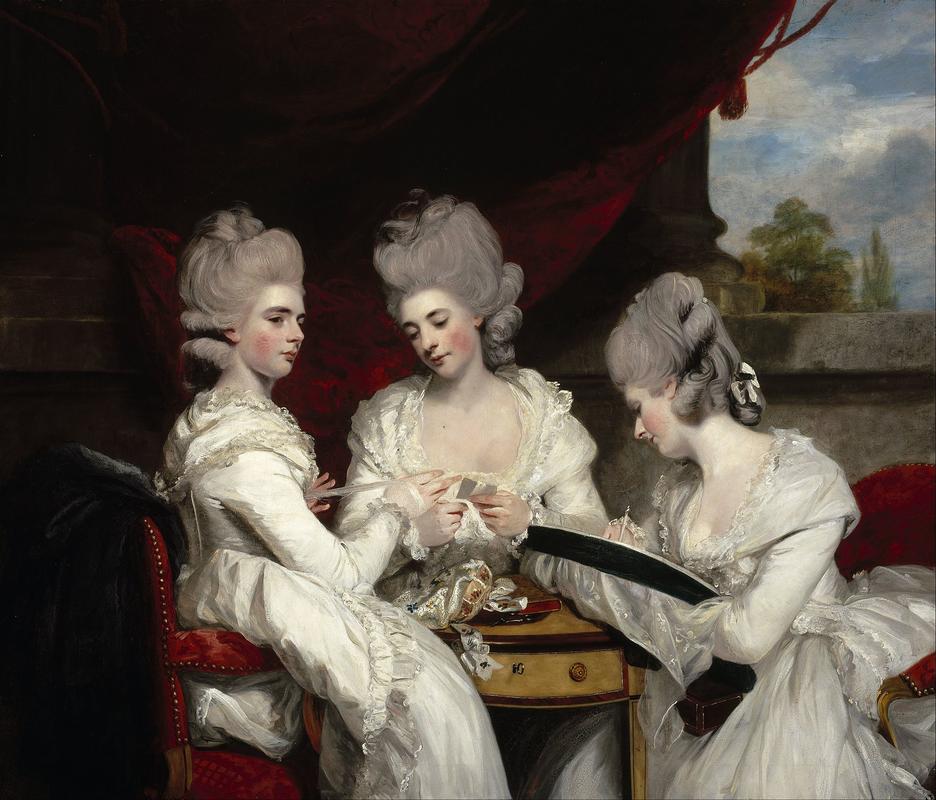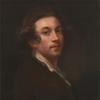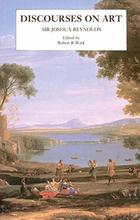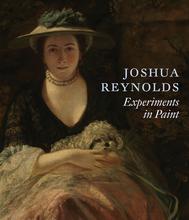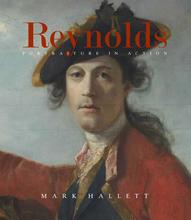More about The Ladies Waldegrave
- All
- Info
- Shop

Sr. Contributor
The Ladies Waldegrave by Sir Joshua Reynolds shows what happens when you combine three things:
A best-selling horror author, a marriage plot worthy of Jane Austen, and enough royal intrigue and bed-hopping to fill a prequel of The Crown.
The rosy, fashionably coiffed ladies pictured are Charlotte Maria (left), Elizabeth Laura (center), and Anna Horatia (right). This painting was commissioned by their great-uncle, Horace Walpole. He was the Stephen King of his time, writing The Castle of Otranto, the first gothic horror novel, which established his reputation as a preeminent man of letters of the day. He was also the son of Sir Robert Walpole, Britain’s first recognized Prime Minister, though unsubstantiated gossip claimed his mother may have been getting busy and that Horace looked a lot like her alleged boyfriend. It seems getting busy ran in the family, as the Ladies Waldegrave’s mother, Maria Walpole, was the illegitimate product of a romance between one of Horace’s brothers and an impoverished milliner said to be the most breathtaking beauty ever seen, even “in all her rags and dirt.”
Despite her humble beginnings, Maria was no slouch either, landing the much older 2nd Earl of Waldegrave, her first husband and the Ladies’ father. Much-older-nobleman husbands have a tendency to die, and Maria was already a widow by 26, leaving her free to (in Horace’s words), “...find as great a match and a younger lover.” She succeeded spectacularly on both counts, secretly marrying a man eight years her junior who also just happened to be Prince William Henry, Duke of Gloucester and Edinburgh, brother of King George III. George was so furious he banished them from court, but could not legally dissolve the match as it predated the Royal Marriages Act that prohibited such unions.
Even as their mother was moving way up in the world and the family had moved to Windsor Castle, the Ladies Waldegrave faced an uncertain future. Maria had produced no male heir, so the Waldegrave estate went to the late Earl’s brother; and while the girls’ lineage was lofty, the stain of illegitimacy made advantageous marriages essential for security. At such times it helps to have a rich celebrity author for an uncle to commission a portrait that accentuates your assets. An ambitious glamour portrait by an artist of Reynolds’ caliber was sure to hang in the Royal Academy, where the most eligible bachelors in Britain would view it. So, basically what we have here is a posh, old-timey Tinder profile picture, designed to entice some marriageable chaps to swipe right.
The girls are making lace, a domestic task with bridal connotations that highlights their housewifely industriousness, but there may be more than meets the eye. Horace Walpole asked Reynolds to paint the sisters as the three Graces of classical mythology, but Reynolds ignored the request, painting them instead as the three Fates, who weave the thread of life. Charlotte holds the silk thread, Elizabeth winds it, and Anna works the embroidery. This identifies them with Clotho, who directs the course of life; Lachesis, who measures its length; and (less directly) Atropos, who cuts it off at death. The Fates were so powerful that even Zeus could not subvert their will. It is unclear whether Reynolds’ intended the darker and more dominant Fates to be merely an aesthetic choice, a coded message about women’s autonomy, or a cynical commentary on the marriage market.
In any case, from a practical standpoint the portrait paid off handsomely. All three sisters made brilliant matches. Charlotte married George FitzRoy, 4th Duke of Grafton, and bore seven children who survived past infancy. Elizabeth married her cousin, the 4th Earl of Waldegrave, and was appointed Lady of the Bedchamber to Charlotte, Princess Royal, the eldest daughter of King George III. Elizebeth had five children, but tragically, one son drowned in the Thames and another in a shipwreck. After a possible clandestine engagement to a rakish duke who died young, Anna married Vice-Admiral Lord Hugh Seymour, another notorious party-boy and rumored lover of Marie Antoinette. Anna tamed his wild ways and bore him six children who survived to adulthood. Anna and Hugh are direct ancestors of Princess Diana, and thus the two younger generations of the current royal family.
In this respect, the Ladies Waldegrave fared better than their three royal half-siblings by their mother’s second marriage to Prince William Henry. The eldest, Princess Sophia, remained happily unmarried by choice. The middle, Princess Caroline, died in infancy of a failed smallpox vaccination. The youngest and only son, Prince William Frederick, made an unsuccessful play for the hand of the ill-fated Princess Charlotte Augusta, only child of the Prince of Wales and therefore heiress apparent to the throne, but settled for his cousin, Princess Mary, one of King George’s six daughters. They married in middle age and died childless. Ironically, it is only through the unassuming Anna Waldegrave that Maria Walpole, bastard daughter of a beauty in rags, wife of a prince, became a matriarch of future kings and queens centuries after her death.
Sources
- A bit of History. “Women of History-E: Euston, Charlotte Maria Waldegrave, Countess of.” Accessed June 25, 2020. http://www.abitofhistory.net
- A Bit of History. “Women of History-W: Waldegrave, Elizabeth Laura Waldegrave, Countess.” Accessed June 25, 2020. http://www.abitofhistory.net
- Campan, Madame. The Private Life of Marie Antoinette, Queen of France and Navarre, Vol. 1. New York: Scribner and Welford, 1884. https://books.google.com/books?id=OLsNAAAAIAAJ&dq=lord+hugh+seymour,+ma…
- Clegg, Melanie. “Portrait of the Week: The Ladies Waldegrave.” Madame Guillotine (blog). July 10, 2013. https://www.madameguillotine.co.uk/2013/07/10/portrait-of-the-week/
- Croasdaile, Caroline. “Joshua Reynolds’ ‘The Ladies Waldegrave.’ ” Art UK, January 18, 2017. https://artuk.org/discover/stories/joshua-reynolds-the-ladies-waldegrave
- Curzon, Catherine. The Scandal of George III’s Court. Yorkshire: Pen & Sword History, 2018. https://books.google.com/books?id=zO6FDwAAQBAJ&printsec=frontcover&sour…
- Curzon, Catherine. “The Scandalous Birth and Eventful Life of Princess Sophia Matilda of Gloucester.” Madame Gilfurt’s Guide to Life (blog). May 29, 2014. https://www.madamegilflurt.com/2014/05/notable-births-princess-sophia-m…
- Dobson, Austin. Horace Walpole: A Memoir. New York: Dodd, Mead and Company, 1980. Project Gutenberg.
- Ellison Fine Art. “The Temple of Vesta. Lady Maria Waldegrave, Lady Horatio Waldegrave and Miss Keppel Their Cousin.” Accessed June 25, 2020. https://ellisonfineart.com/the-temple-of-vesta-lady-maria-waldegrave-la…
- Graves, Algernon, and William Vine Cronin. A History of the Works of Sir Joshua Reynolds, P.R.A. London: Chiswick Press, 1899.
- GreekMythology.com. “The Fates.” Accessed June 24, 2020. https://www.greekmythology.com/Other_Gods/The_Fates/the_fates.html
- Knowles, Rachel. “Maria, Duchess of Gloucester, formerly Countess Waldegrave (1736-1807).” Regency History (blog). November 21, 2013. https://www.regencyhistory.net/2013/11/maria-duchess-of-gloucester-form…
- National Galleries Scotland. “Sir Joshua Reynolds: The Ladies Waldegrave.” Accessed June 24, 2020. https://www.nationalgalleries.org/art-and-artists/5360/ladies-waldegrave
- Ontario Historical Society: Papers and Records, Vol. 5. Toronto: Ontario Historical Society, 1904. https://books.google.com/books?id=pbI1AAAAIAAJ&printsec=frontcover&sour…
- The Peerage. “Admiral Lord Hugh Seymour/Lady Anne Horatia Waldegrave.” Person Page - 10295. Accessed June 25, 2020. http://thepeerage.com/p10295.htm
- Retford, Kate. “The Crown and Glory of a Woman.” in A Companion to British Art: 1600 to the Present, edited by Dana Arnold and David Peters Corbett, 475. Chichester: Wylie Blackewell, 2016.
- Tucker, Carole. “Strawberry Hill Spotlights: The Ladies Waldegrave.” Strawberry Hill House Blog (blog). September 3, 2018. https://strawberryhillhouseblog.wordpress.com/2018/09/03/strawberry-hil…
- Wasserstein, Felipe. “The Evolution of Horror in Fiction: a brief guide.” The Circular, April 4, 2017. http://thecircular.org/evolution-horror-fiction-brief-guide/
Featured Content
Here is what Wikipedia says about The Ladies Waldegrave
The Ladies Waldegrave is a group portrait by Joshua Reynolds from 1780–81, now in the Scottish National Gallery, who acquired it in 1952. It shows the three daughters of James Waldegrave, 2nd Earl Waldegrave, and Maria Walpole – from left to right, Charlotte (holding a skein of silk), Elizabeth (winding Charlotte's skein onto a card) and Anna (producing tambour lace). Exhibited at the Royal Academy in 1781, it was commissioned the previous year by the subjects' mother in the hope of attracting potential suitors for them – all three of them were at the time unmarried.
Check out the full Wikipedia article about The Ladies Waldegrave

